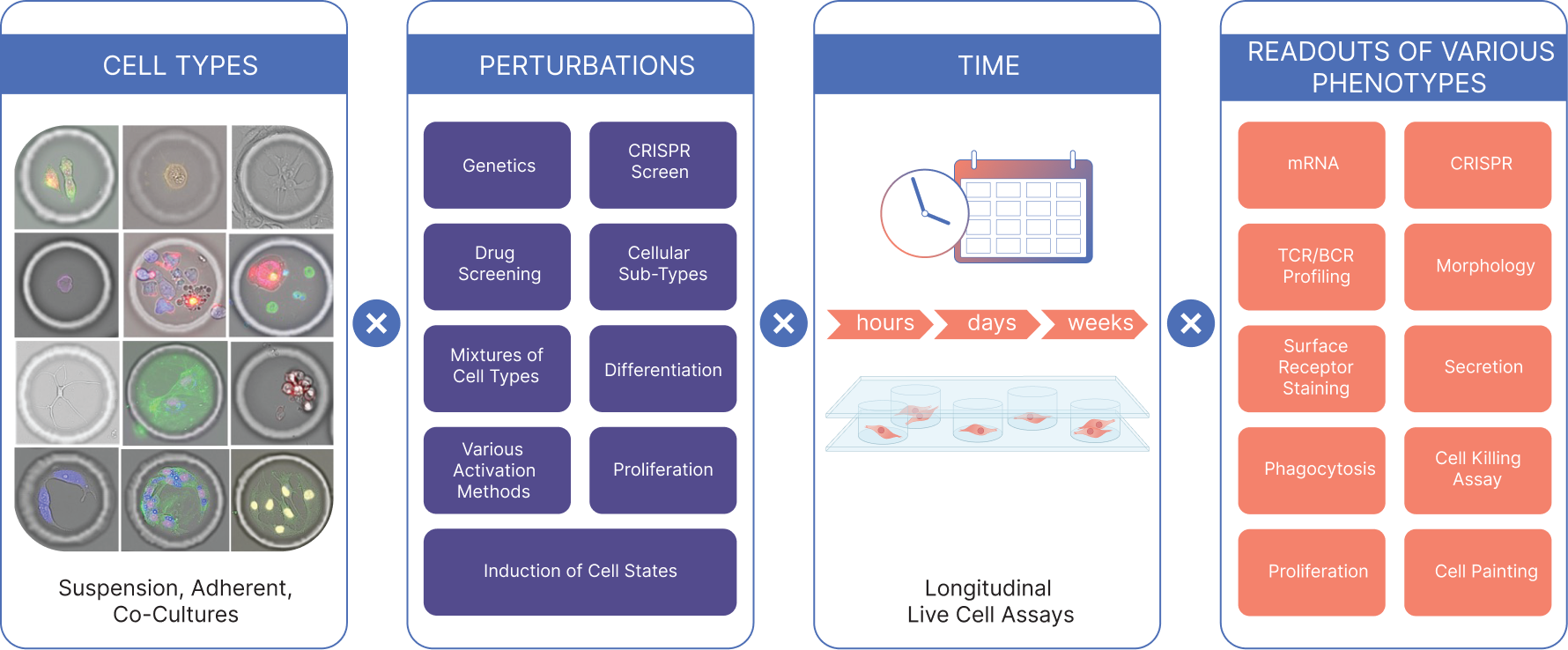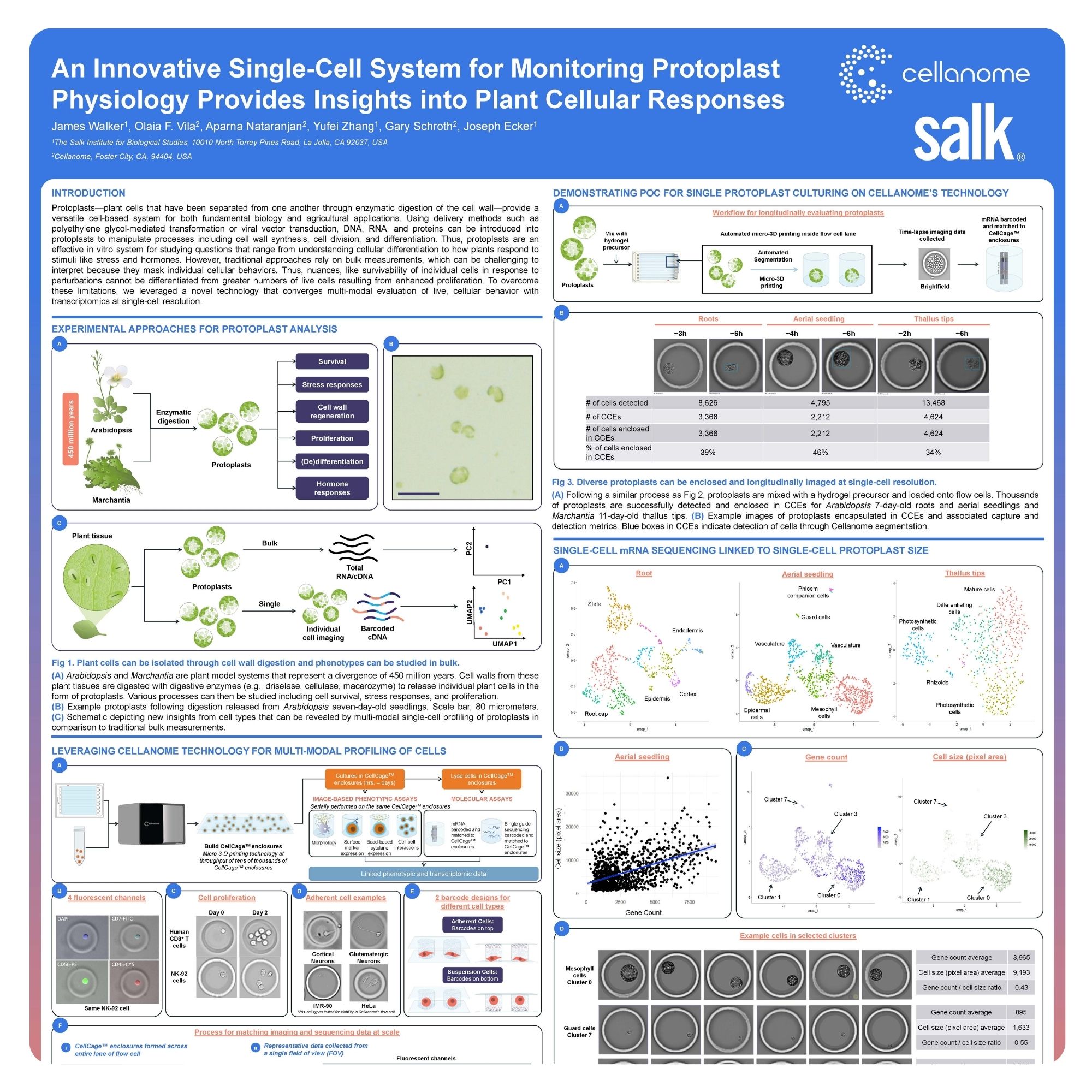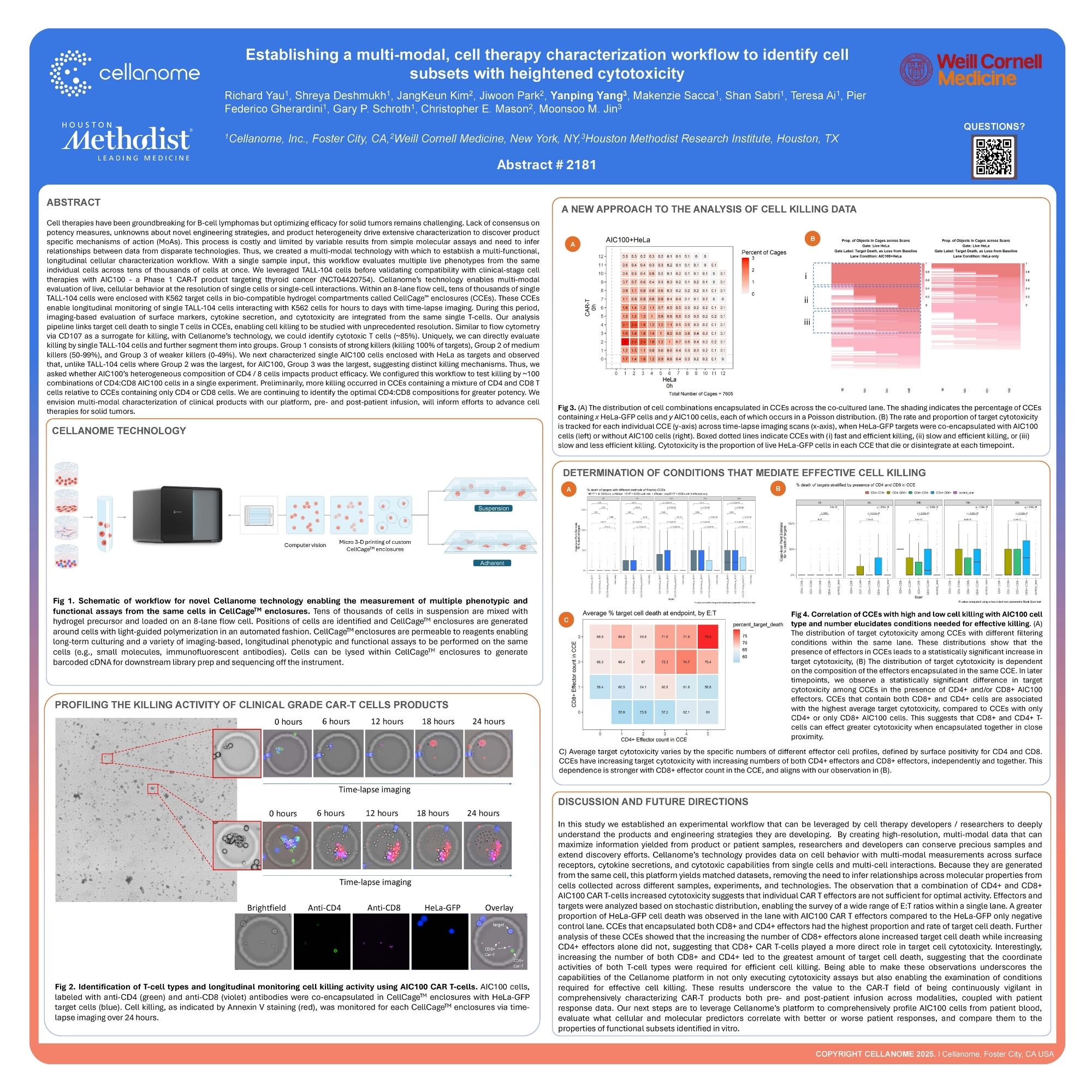
CellCage Technology Brings Wells to Cells
By keeping cells in place, the Cellanome R3200 creates an open canvas for experimental design, enabling characterization of diverse cell types and combinations with linked readouts.
Time and Context Matter in Cell Biology
In biology, what you see depends entirely on when and how you look, as cellular functions emerge over time through dynamic interactions. A single cell can run multiple functional programs simultaneously, while RNA profiles may hint at potential pathways, but post-transcriptional control and cellular context ultimately determine whether they translate into action. Even under identical stimuli, cellular responses vary dramatically in timing, type, and duration, with complex programs often unfolding over hours to days.
Why current workflows miss the full picture
- Transient changes disappear: Without longitudinal, single-cell or single-ensemble data, early-, late-, or non-responders are averaged together and obscured.
- Connections are broken: Measuring each readout separately in different cells severs the link between inputs and outcomes.
- Biology is distorted: Stripping cells from neighbors or forcing adherent cells into suspension can alter behavior and reduce viability.
Cellanome CellCage Technology
CellCage™ technology keeps biology intact
Follow the same cells or ensembles over time, capture movement, interactions, and functional changes, what we call cellular choreography, and link these observations directly to transcriptomic profiles and sgRNA expression from the same cells.
Understand the core workflow
The Cellanome R3200 platform combines fluorescent imaging, AI-powered cell segmentation, and micro-3D printing to build customized CellCage enclosures, isolating live cells for extended culture, functional assays and transcriptomic profiling, all in one run.
Cellanome Core Innovations
The Cellanome Platform brings together a set of proprietary innovations to reveal cellular behavior, interactions, and molecular programs in ways that static snapshots and fragmented approaches cannot.

Programmable Enclosures
Isolate single cells or defined ensembles with media exchange.
- 3D printed microstructures, tunable in shape, size, and permeability, isolate single cells or defined ensembles. Thousands of CellCage enclosures (CCEs) fit in each flow cell lane. Media and reagent exchange support extended culture and precise delivery of macromolecules. Certain configurations permit signaling across the enclosure wall, enabling, for example, the study of individual neuron somas within a live network, or improved viability for cell types that depend on cues from neighbors.
Photopatterned Cell Isolation
Use real-time imaging and AI to isolate cells of interest in minutes.
- Real-time brightfield and fluorescent imaging, combined with AI-driven algorithms, identify target cells. A digital micromirror device polymerizes enclosures around them in seconds, based on criteria like morphology, marker expression, or co-localization. Tens of thousands of CCEs can be formed in under 15 minutes.
Surface Customization & Coordinate Linking:
Functionalized flow cell surface supports cell adhesion and data traceability.
- The flow cell surface serves many purposes: it forms the floor and ceiling of each CCE, supports adherent cell attachment via customizable coatings and links CCE location to RNA-seq and/or CRISPR-seq data. Embedded fiducials enable coordinate-based alignment, allowing third-party imaging to map back to individual CCEs and integrate into the unified data object.
Lane-based Architecture and Laminar Flow:
Controlled flow for washout, pulsing, and sequential dosing.
- Each flow cell lane is physically isolated, allowing condition-specific experiments to run in parallel. Unlike plate-based systems, where residual compounds or diffusion make true washout difficult, the Cellanome platform enables baseline measurement, compound pulsing, and sequential treatments.
Unified Data Architecture:
Link live cell behavior to transcriptomic signatures.
- Every CCE acts as a matched input-output unit, with a unique identifier linking live-cell observations over time to end-point RNA readouts. All measurements are structured into a unified object within our cloud analysis suite, enabling precise alignment across timepoints and modalities.
Turn Four Dimensions of Biology into Limitless Discovery
Cellanome’s technology systematically combines various cell types, perturbations, time points, and phenotypic readouts to explore an expansive experimental landscape. This approach allows researchers to design experiments that capture both a wide range of combinations and in-depth, multi-modal data from each combination. This combinatorial capability allows discovery of relationships that might otherwise remain hidden, resulting in faster, more comprehensive, and biologically relevant insights than traditional single-variable methods.

Gain Deeper Insights For Discovery and Modeling of Complex Biology
As biology embraces AI-guided discovery, CRISPR-based perturbations, in silico modeling, and lab-in-the-loop experimentation, its frontier is increasingly shaped by data and computation. Cellanome delivers rich, connected data built for this era, grounding predictive models in real biological trajectories and opening new possibilities for mechanistic understanding and more effective interventions.
- Track Dynamics With Precision: Follow resistance pathways, functional shifts, and cell-cell interactions over days to weeks, without disrupting native morphology. Simulate chronic, acute, and sequential treatment regimens in disease-relevant contexts.
- Build High-Quality Training Data at Scale: Generate structured, time-resolved datasets under consistent conditions and defined perturbations to reduce imputation, resolve complex states, and train robust, interpretable models.
- Advance Broad Applications: Unlock insights in immunology, oncology, neurobiology, and aging fields, where dynamic interactions, multi-modal readouts, and support for adherent cells are essential.
Trusted by Leading Researchers
Researchers across academia and industry are using Cellanome to investigate neuronal networks, immune interactions, and perturbation-response studies (among other applications), uncovering novel insights that are shared at leading scientific conferences.
Let’s Talk About Your Experiments
Tell us a bit about your work, and we’ll connect you with a Cellanome scientist with experience in similar studies.




